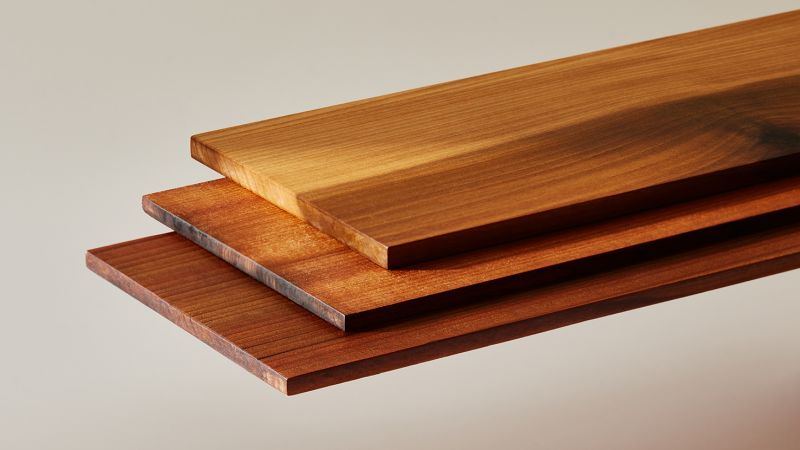- Indian textile exporters turn to Europe, offer discounts to offset US tariffs Reuters
- Textiles face tariff turmoil amid US-China tensions and India’s woes Business Standard
- US tariffs hit India’s textile exports by 50%: CITI | Tap to know more | Inshorts Inshorts
- U.S. tariff hits Indian textile and apparel exporters; 50% drop in revenues, says survey Fortune India
- India’s 28% textile export share at risk as US tariffs bite: CITI Fibre2Fashion
Blog
-
Indian textile exporters turn to Europe, offer discounts to offset US tariffs – Reuters
-

Study uncovers key protein complex controlling sperm motility and male fertility
Infertility affects about one in six couples, and male factors account for roughly half of all cases-often because sperm don’t swim well. Researchers from the University of Osaka uncovered a key component of the “switch” that keeps…
Continue Reading
-

The ‘Superwood’ that’s 10 times stronger than steel
A US company has engineered a new type of wood that it says has up to 10 times the strength-to-weight ratio of steel, while also being up to six times lighter.
“Superwood” has just launched as a commercial product, manufactured by InventWood, a company co-founded by material scientist Liangbing Hu.
Over a decade ago, Hu set out on a quest to reinvent one of the oldest building materials known to humankind. While working at the University of Maryland’s Center for Materials Innovation, Hu, who’s now a professor at Yale, found innovative ways to re-engineer wood. He even made it transparent by removing part of one of its key components, lignin, which gives wood its color and some of its strength.
His real goal, however, was to make wood stronger, using cellulose, the main component of plant fiber and “the most abundant biopolymer on the planet,” according to Hu.
The breakthrough came in 2017, when Hu first strengthened regular wood by chemically treating it to enhance its natural cellulose, making it a better construction material.
The wood was first boiled in a bath of water and selected chemicals, then hot-pressed to collapse it at the cellular level, making it significantly denser. At the end of the weeklong process, the resulting wood had a strength-to-weight ratio “higher than that of most structural metals and alloys,” according to the study published in the journal Nature.
Now, after years of Hu perfecting the process and filing over 140 patents, Superwood has launched commercially.
“From a chemical and a practical standpoint, it’s wood,” explained InventWood CEO Alex Lau, who joined the business in 2021. In buildings, that would allow for structures potentially up to four times lighter than today, Lau said, meaning they would be more earthquake resistant, as well as easier on foundations, making construction faster and easier.
“It looks just like wood, and when you test it, it behaves like wood,” Lau added, “except it’s much stronger and better than wood in pretty much every aspect that we’ve tested.”
InventWood is manufacturing Superwood in its plant in Frederick, Maryland, and although the production time is now measured in hours rather than days, it will take some time to scale up, Lau said.
Initially, the company plans to focus on external applications such as decking and cladding, before moving on to internal applications such as wall paneling, flooring and home furniture sometime next year.
“People always complain that furniture breaks down over time, and that’s often because it sags or breaks down at the joints, which are currently made of metal because wood isn’t strong enough,” said Lau. Superwood could be used to replace these parts, he said, as well as screws, nails and other metal fasteners.
Eventually, Lau projects that an entire building could be constructed out of Superwood, although that would require more testing.
Much like in Hu’s original experiment, the wood is strengthened via a chemical process that alters the basic structure of the cellulose and is compressed very tightly without springing back. “In theory, we can use any kind of wooden material,” Lau said. “In practice, we’ve tested with 19 different kinds of species of wood as well as bamboo, and it’s worked on all of them.”
InventWood says Superwood is up to 20 times stronger than regular wood and up to 10 times more resistant to dents, because the natural porous structure of the wood has been collapsed and toughened. That makes it impervious to fungi and insects. It also gets the highest rating in standard fire resistance tests.
Superwood currently costs more than regular wood and also has a larger manufacturing carbon footprint, but Lau said that compared to steel manufacturing, the carbon emissions are 90% lower.
He added that the target is “not to be cheaper than wood, but to be competitive with steel,” when manufacturing scales up.
Other types of engineered wood have existed as construction materials for a long time, but InventWood says that these are simply rearranged pieces of wood that are held together with adhesives, rather than wood that has been altered at the molecular level like Superwood.
Timber construction has had a resurgence in recent years, and wood is now used to build skyscrapers. The city of Milwaukee — which already hosts the world’s tallest timber tower, the 284-foot (87-meter) Ascent MKE — has revealed plans to build an even taller one, at a whopping 600 feet (183 meters) in height.
Currently, concrete is by far the most-used construction material on Earth, and even though its production has plateaued in recent years, making concrete generates 7% of the world’s global carbon emissions.
Philip Oldfield, an architecture professor and head of the School of Built Environment at the University of New South Wales, in Australia, who is not involved with InventWood, said timber has environmental benefits over many other building materials as its production processes are less intensive than steel and concrete, and timber stores CO2 in its woody biomass through photosynthesis. “Wood products can be considered a long-term carbon storage system, and construction with wood could see our cities ‘lock in’ carbon emission in buildings for long periods of time,” he added.
However, he points out that existing engineered timber products are already competing with steel and concrete. “The barrier to more timber buildings isn’t really the need for more strength,” he explained, “it’s that the construction industry is risk averse and slow to change.”
To see more timber in buildings, he argued, we need better education, pilot projects and improved regulatory frameworks: “But stronger timber products like this Superwood could allow architects to create larger spans and more durable finishes with timber, which would certainly be beneficial and could foster greater timber uptake.”
Continue Reading
-

US-China trade tensions back as port fees take effect
New fees on US ships arriving in Chinese ports came into effect on Tuesday, as trade tensions between Washington and Beijing increase.
The charges – which China says aim to “safeguard its shipping industry” from “discriminatory” measures – apply…
Continue Reading
-

FBR strongly condemns cowardly attack resulting in martyrdom of two RTO officials
Islamabad – The Federal Board of Revenue (FBR) strongly condemns the cowardly attack that resulted in the martyrdom of its officials Sepoy Muqaddar Ali and Sepoy Nazar Muhammad of the Regional Tax Office (RTO), Peshawar. The officials were…
Continue Reading
-

Loser’s Brain: How Neuroscience Controls Social Behavior
Social hierarchies are everywhere-think of high school dramas, where the athletes are portrayed as most popular, or large companies, where the CEO makes the important decisions. Such hierarchies aren’t just limited to humans, but span the animal…
Continue Reading
-

How we sharpened the James Webb telescope’s vision from a million kilometres away
After Christmas dinner in 2021, our family was glued to the television, watching the nail-biting launch of NASA’s US$10 billion (AU$15 billion) James Webb Space Telescope. There had not been such a leap forward in telescope technology…
Continue Reading
-

Brain activity reveals sound outperforms touch in sensing musical rhythm
How do people keep the beat to music? When people listen to songs, slow waves of activity in the brain correspond to the perceived beat so that they can tap their feet, nod their heads, or dance along. In a new JNeurosci paper,…
Continue Reading
-

Samsung on track for highest profit in 3 years
Unlock the Editor’s Digest for free
Roula Khalaf, Editor of the FT, selects her favourite stories in this weekly newsletter.
Samsung Electronics expects to post its highest operating profit in three years on the back of high demand for memory chips used in artificial intelligence, after several quarters of tepid growth fuelled concerns it was losing ground to rivals.
The tech conglomerate on Tuesday said operating profit in the quarter ending in September rose more than 30 per cent compared with a year ago to Won12.1tn ($8.5bn).
The figure is significantly higher than the Won9.7tn forecast by analysts as compiled by Bloomberg.
Samsung’s shares rose as much as 3 per cent to a record high of Won97,500 on Tuesday. The company’s stock has rallied more than 66 per cent in the past six months as a result of the AI boom.
The South Korean chipmaker this month signed a letter of intent with OpenAI to supply semiconductors for the ChatGPT maker’s $500bn Stargate data centre project.
Samsung accounts for just over a quarter of the global market for high-bandwidth memory products, which are used in Nvidia’s most advanced AI chips, with SK Hynix and US-based Micron the other leading groups in the sector, according to consultancy TrendForce.
The numbers were released in an earnings guidance and were not broken down by division. The company expects to deliver full earnings at the end of this month.
Continue Reading
-

Public knowledge, attitudes, practices, and key influencing factors regarding cancer screening in Yemen | Conflict and Health
Participant demographics
The study included a total of 996 participants with varied demographic and health-related characteristics. Most participants were young adults aged 18–29 years (69.1%), followed by 17.7% aged 30–39. The gender…
Continue Reading